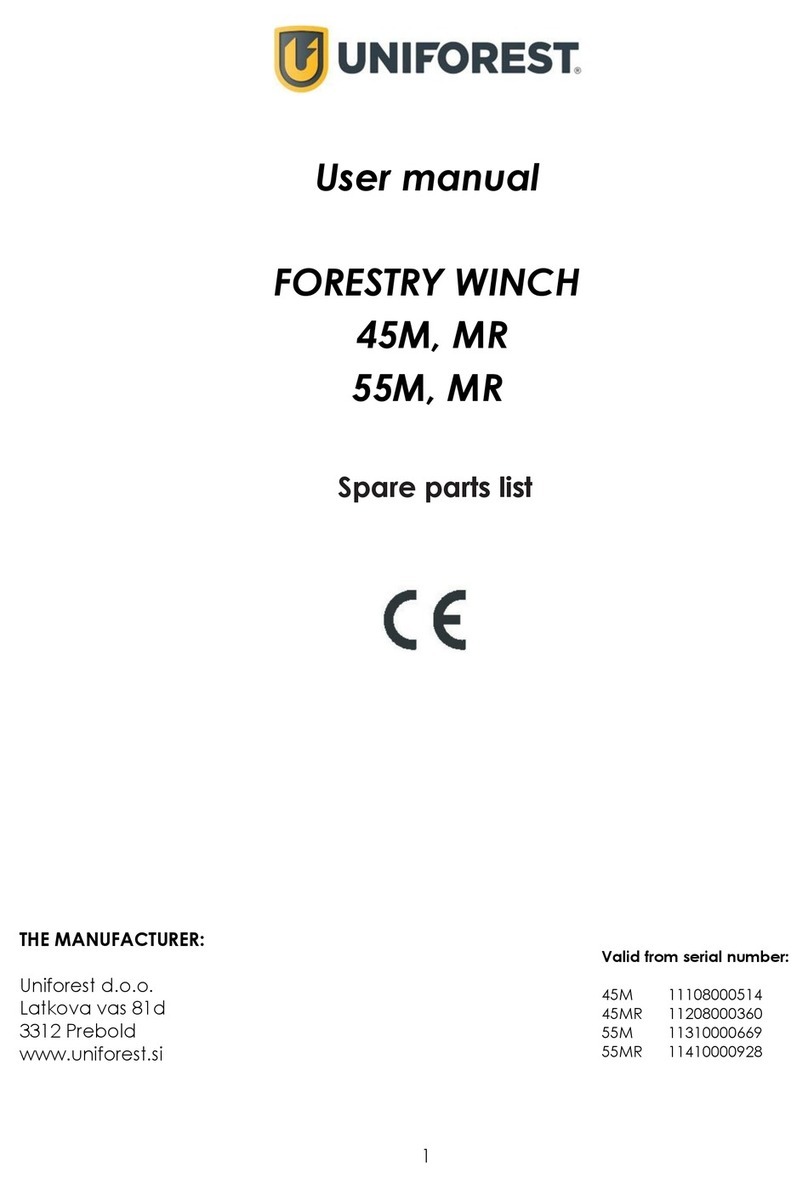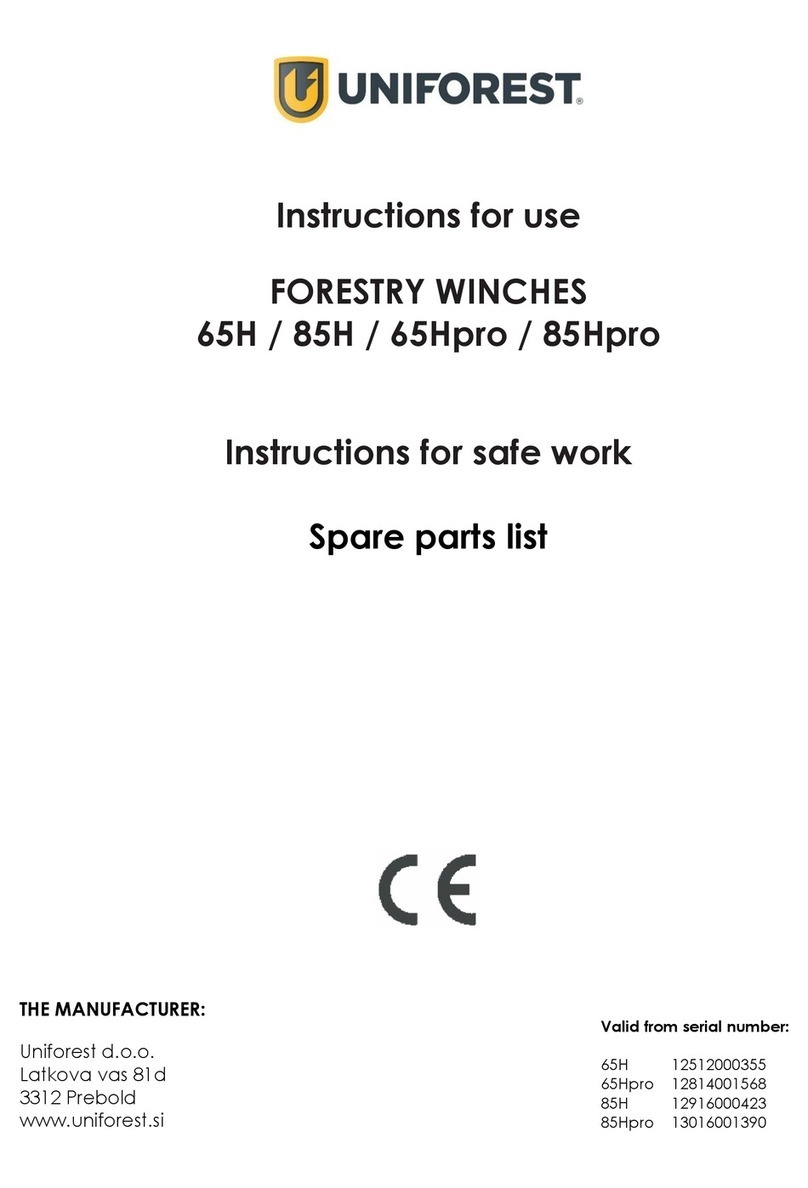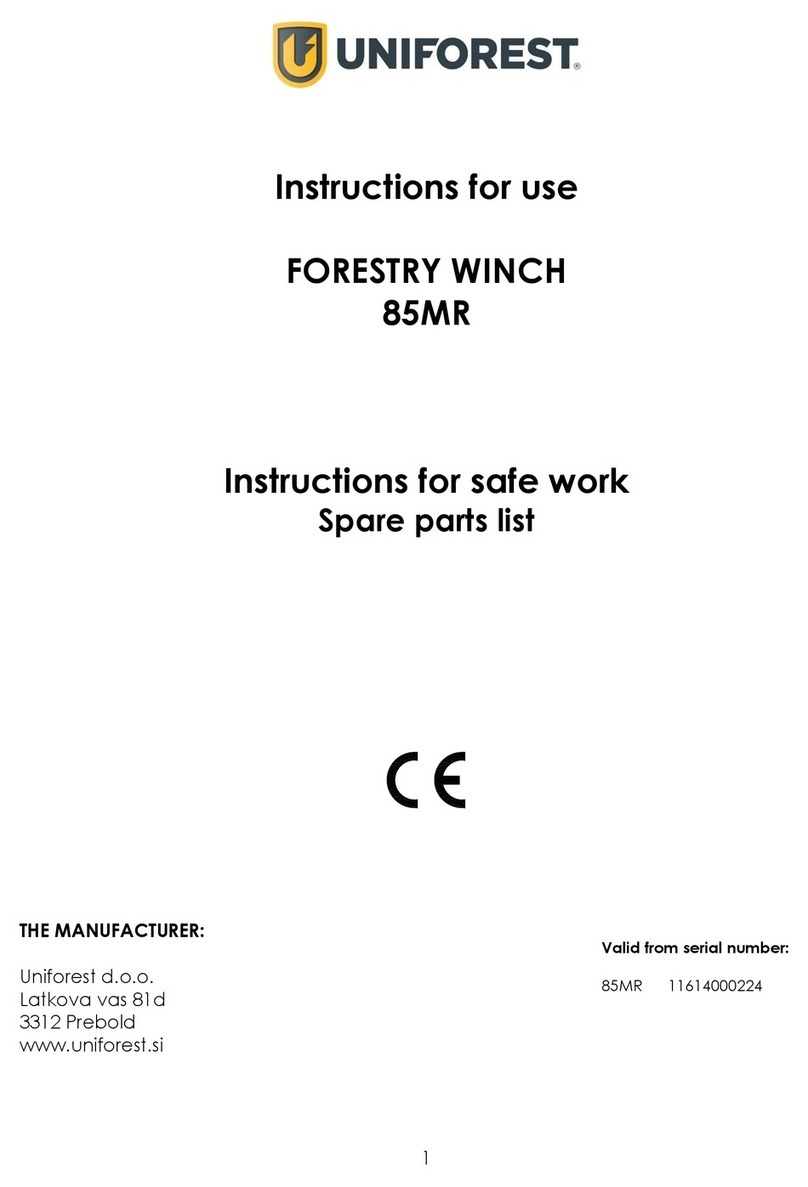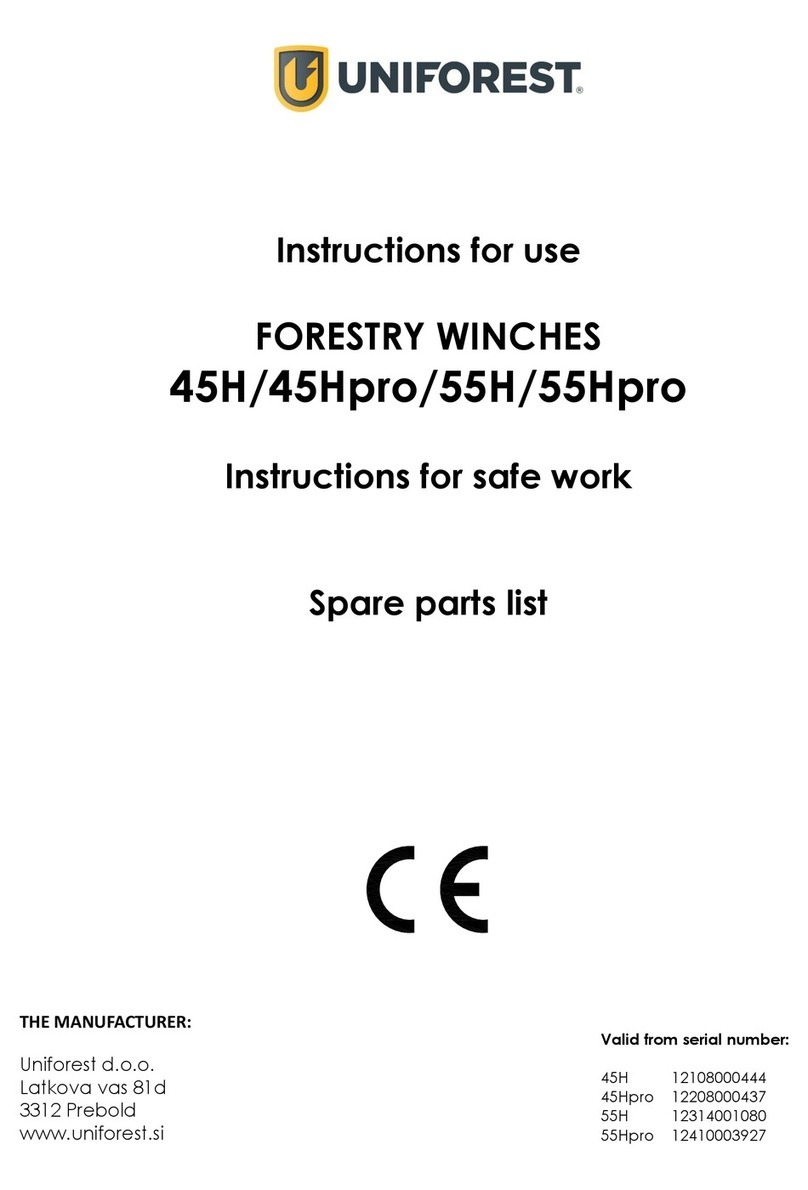
Dear customer!
We are pleased that you decided to purchase our machine. Forestry winch is a forestry
machine of modern design, whose construction enables effective and safe work in the
forest. Work in the forest can only be safe if you follow the instructions for safe work and use.
Upon following all instructions, the machine will operate flawlessly, and you will avoid
unnecessary costs. We recommend reading the instructions carefully. If you are not sure
about something, you can also contact us. We wish you safe work.
1. Index
1. Index ............................................................................................................................................... 2
2. Intended purpose......................................................................................................................... 3
3. Technical data:............................................................................................................................. 3
1. General:.......................................................................................................................................... 4
2. Cardan shaft.................................................................................................................................. 7
INSTRUCTIONS FOR USE........................................................................................................................... 8
1. Description ..................................................................................................................................... 8
2. Tractor mounting........................................................................................................................... 9
3. Wire rope unwinding .................................................................................................................... 9
4. Winch controler........................................................................................................................... 10
SETTINGS.................................................................................................................................................. 11
1. Clutch ........................................................................................................................................... 11
2. Preliminary brake ........................................................................................................................ 11
3. Brake ............................................................................................................................................. 11
4. Drive chain tensioning................................................................................................................ 13
5. Wire rope assembly .................................................................................................................... 13
MAINTENANCE....................................................................................................................................... 14
explanation of nameplate .................................................................................................................. 16
SPARE PARTS LIST.................................................................................................................................... 17
EC DECLARATION OF CONFORMITY................................................................................................... 28































